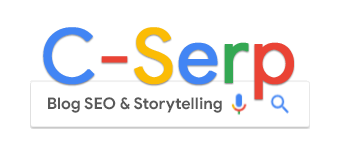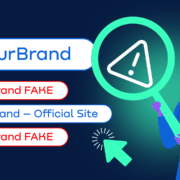How to save $150,000 in brand CPC costs: Brand bidding explained by Bluepear


Brand bidding is the practice when your affiliates or competitors run paid ads on your branded keywords to capture your traffic and potential customers. You can ignore brand bidding, but your budget and customers won’t. Recent statistics show that:
- CPC for branded keywords can increase up to ×10 due to aggressive brand bidding.
- When a competitor ranks above the official brand site, up to 30% of search traffic is lost.
- Revenue drops by 54% if brand campaigns are paused without protection.
This shows why knowing brand bidding meaning is now a must for brands.
The problem is that fraudsters have learned how to work around manual affiliate monitoring. They use geotargeting, dayparting, and other gray hat schemes to hide trademark bidding. That’s why companies may lose their budgets and clients without even knowing about brand bidding examples in their SERPs.
Fortunately, it’s not only fraudsters who develop sophisticated schemes. Major brands like Booking.com or Twilio actively use automated brand bidding monitoring tools. Those tools permanently check SERPs for violations from different geos, devices, and browsers to ensure brand safety.
The numbers prove that brand bidding monitoring tools actually work.
For example, Twilio saved $150,000 in brand CPC costs in the first year of using a brand protection tool.
Let’s discover the meaning of brand bidding, check your brand for red flags, and explore ways to fight against fraudsters.
How brand bidding ruins your PPC
Let’s start with the brand bidding meaning. Brand bidding happens when someone uses your brand name as a keyword in their paid ads.
This may be done by affiliates, competitors, or coupon websites. As a result, people see third-party ads when they are searching for your brand.
This brand bidding example might seem harmless. But in reality, it quietly drains your marketing budget and undermines your PPC strategy.
Here’s how:
- Higher CPC. You pay more to rank for your own brand.
- Lost clicks. Competitors steal customers already looking for you.
- Lower ROI. You spend more, but conversions drop.
- Customer confusion. Misleading ads damage trust.
This is how brands lose thousands of dollars without even knowing the real reason. Understanding brand bidding meaning shows why violators profit quietly.
Who uses brand bidding to exploit brands

Here’s who profits from bidding on your keywords:
Affiliates
Some affiliates bid on your branded keywords to steal your organic traffic and resell it back to you for a commission. They block your organic links with paid ads, so even users who were already looking for you end up clicking their ad, and you pay for traffic you could’ve gotten for free.
- Brand bidding example: A user searches for [YourBrand official website] on Google. Instead of your official website, they see an affiliate ad with text like “Best Deals on YourBrand – Shop Now” in the first line. They click, the affiliate earns a commission.
Competitors
Your direct competitors often bid on your branded keywords to capture high-intent traffic. These are users who were already searching for your product – but now, they go to your competitor’s website.
- Brand bidding example: A user searches [YourBrand CRM]. Instead of your site, they see an ad like “Switch from YourBrand Try Our CRM”. Your competitor steals the click and the customer, and you lose revenue.
Coupon websites
Coupon sites bid on your branded terms and resell your organic clicks through affiliate links. You lose direct traffic, pay unnecessary commissions, and risk damaging your brand image.
- Brand bidding example: A person is ready to buy and searches “YourBrand discount code” before checkout. Instead of your site, they click a coupon aggregator ad. You lose a free purchase and pay commission.
Scammers
Scammers use brand bidding to impersonate your company, mislead customers, and steal payments or data. You lose both revenue and customer trust.
- Brand bidding example: A user searches [YourBrand official website]. The top ad claims to be your page but redirects to a fake site. The victim shares sensitive information, thinking they’re dealing with your brand, but the scammers profit instead.
That’s why understanding brand bidding meaning is key to stopping losses.
What makes trademark bidding invisible
Violators profit from brand bidding. They do their best to hide the violations from brands using special techniques like:
- Geotargeting. Ads appear only in specific regions or countries, so if you’re monitoring from the wrong location, you won’t see them.
- Cloaking. The system shows different content to users and brand representatives. You see a harmless page, while real users get misleading ads.
- Redirect chains. The ad redirects users through multiple links, masking the final destination. This hides who actually benefits from the traffic.
- User-agent spoofing. The ad system detects the browser or device type. If it spots the brand manager’s account, it hides the violating ad and shows it only to regular users.
Manual monitoring fails when it comes to such advanced fraud. Yet, automated brand protection tools can de-cloak websites, check all the geos, and go through redirect chains.
This was a quick overview of brand bidding. For a deeper understanding, here’s a comprehensive guide on brand bidding.
How to spot trademark bidding
Top 3 red flags of brand bidding
Certain PPC metrics shift when someone bids on your branded keywords:
- CPC goes up. Your branded keywords suddenly get more expensive. If you’re paying more for clicks that used to be cheap, it’s a sign of competitor or affiliate bidding.
- Conversion rate drops. You notice more paid clicks but fewer conversions. Warm traffic is getting hijacked, and not all users make it to your site.
- Traffic spikes from specific sources. A sudden rise in traffic from one browser, device, or region often points to hidden brand bidding using targeting tricks.
These patterns signal that someone is intercepting your branded search – and you’re paying the price.
Real brand bidding examples
Here’s what brand bidding often looks like in real life:
- One-page landing sites. Simple, unofficial pages appear in paid search with aggressive offers. Users click, but the site isn’t yours – someone profits off your traffic.
- Coupon pages in ads. You search your brand with “discount” or “promo code” – the top ad links to a third-party coupon site, not your official page.
- Lookalike domains. Ads lead to domains that copy your brand name, like yourbrand-deals.com or yourbrand-shop.net. They confuse customers and steal traffic.
An automated brand bidding monitoring tool checks all the search engine results and notifies you about violations.
Why even great teams miss trademark bidding
On paper, manual affiliate monitoring sounds doable, but let’s break down the numbers:
- You have 50 branded keyword variations.
- You need to check them across 10 regions.
- In 3 major browsers (Chrome, Safari, Firefox).
- Plus different device types and time slots.
Total checks required:
50 keywords × 10 regions × 3 devices = 1,500 searches per audit
Let’s be realistic:
- 1 search takes about 1 minute
- Full check = 1,500 minutes, or 25 hours of work every day.
There aren’t enough hours in a day to properly monitor your brand manually. Without automation, staying fully protected 24/7 is simply impossible.
Why standard keyword monitoring tools fail against PPC fraud

Most keyword monitoring tools are designed for general PPC insights: tracking rankings, competitor keywords, or ad visibility. They’re great for surface-level data. However, when it comes to detecting advanced PPC fraud, they leave brands exposed.
Here’s why:
 They only scratch the surface – monitoring basic metrics like keyword rankings and ad share, while sophisticated fraud remains hidden.
They only scratch the surface – monitoring basic metrics like keyword rankings and ad share, while sophisticated fraud remains hidden. No real-time protection – violations are spotted after the damage is done, not while it’s happening.
No real-time protection – violations are spotted after the damage is done, not while it’s happening. Blind to cloaking and redirects – they can’t uncover hidden landing pages or complex redirect chains used to disguise trademark bidding.
Blind to cloaking and redirects – they can’t uncover hidden landing pages or complex redirect chains used to disguise trademark bidding. Limited in geographic and device simulation – fraudsters exploit regional and device-specific loopholes, staying invisible to traditional tools.
Limited in geographic and device simulation – fraudsters exploit regional and device-specific loopholes, staying invisible to traditional tools.
BluePear changes the game.
 Always-on monitoring – scanning SERPs up to 24 times a day across GEOs, devices, and browsers.
Always-on monitoring – scanning SERPs up to 24 times a day across GEOs, devices, and browsers. Human-like simulations – mimicking real user behavior to reveal cloaked ads and fake redirects.
Human-like simulations – mimicking real user behavior to reveal cloaked ads and fake redirects. Instant alerts and proof – delivering screenshots, URLs, affiliate IDs, and timestamps for decisive action.
Instant alerts and proof – delivering screenshots, URLs, affiliate IDs, and timestamps for decisive action. Built for brand protection – with a laser focus on detecting and stopping PPC fraud before it drains your budget.
Built for brand protection – with a laser focus on detecting and stopping PPC fraud before it drains your budget.
Traditional keyword monitoring tools show you what’s happening in your campaigns. BluePear shows you what’s hidden – and gives you the power to stop it.
How BluePear helps detect brand bidding

Here’s how working with BluePear looks in practice:
- You enter branded keywords for tracking.
- BluePear scans search results automatically.
- It sends requests from different devices, browsers, and locations.
- The system clicks ads, simulating real user actions.
- BluePear collects evidence: ad copy, URL, affiliate ID, time, and location.
- It takes screenshots and generates a detailed violation report.
- You get instant alerts when suspicious ads appear.
As a result, no violation goes unnoticed with the brand protection system. All you need to do is enter branded queries and respond to the violations found.
Final thoughts
Brand bidding steals your traffic, inflates CPC, and drains your budget silently. Standard tools miss hidden fraud. BluePear monitors your branded keywords 24/7, detects violations in real time, and protects your brand.
Ready to see how it works?
Try Bluepear free for 7 days — find hidden brand bidding and protect your budget.



